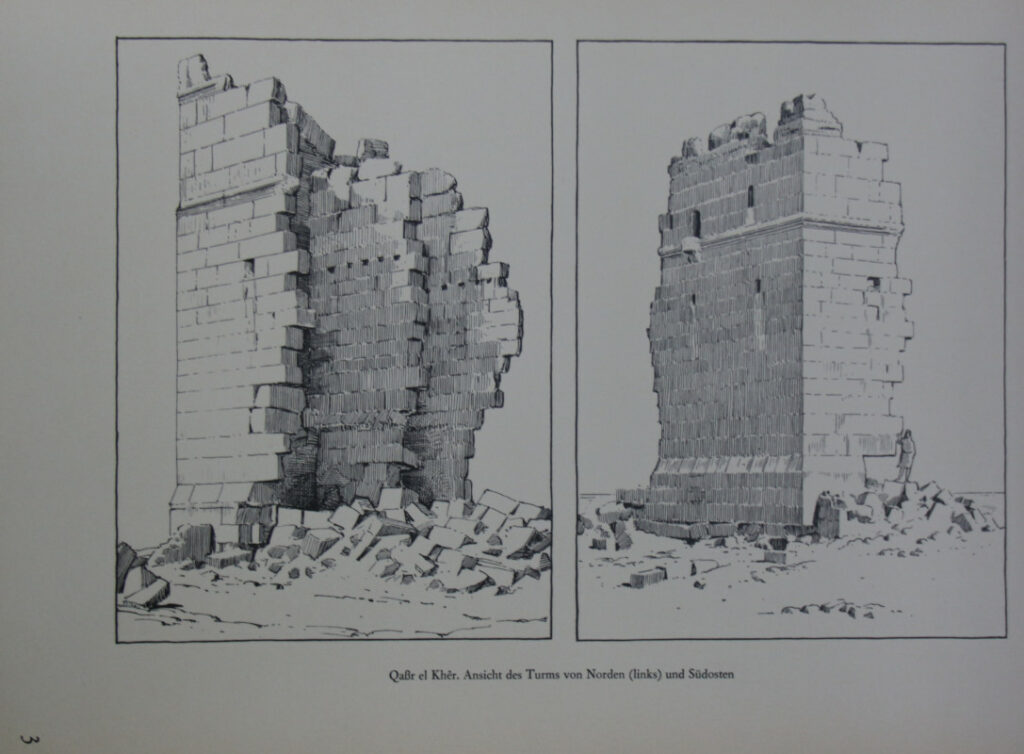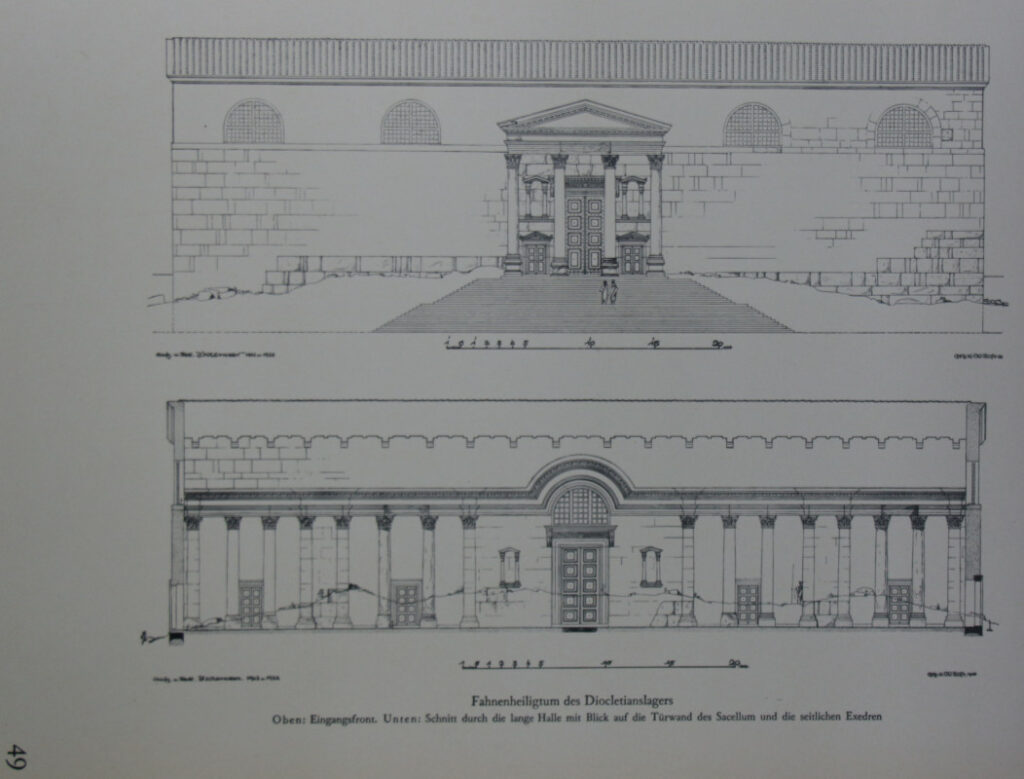Palmyra. Ergebnisse der Expeditionen von 1902 und 1917.
Two volumes, cloth, folio (paper size: 375 x 270 mm). Text volume: pp. 5, (1), 1, (1), 171 with 183 illustrations in the text and one folded plan in back pocket. Plate volume: 100 plates, of which 19 folding (17 x 2 sheets, 2 x 3 sheets).
Published by Heinrich Keller, Berlin, 1932.
Very rare and complete first edition of this work.
Edited by Daniel Krencker, Otto Puchstein, Bruno Schulz, Carl Watzinger, Theodor Wiegand and Karl Wulzinger and with contributions by Adolf Fick, Hans Lehner and Edmund Weigand.
The archeological expedition of 1902 was headed by Otto Puchstein, while the 1917 excavations were conducted under Theodor Wiegand.
This publication is considered an important scientific work in the field of archaeology, particularly for the study of Palmyra, one of the most significant ancient cities in Syria. Edited by Theodor Wiegand and published in 1932, this monumental work documents the results of the first major systematic archaeological expeditions to Palmyra.
The publication is notable for several reasons:
- Foundational Research: It represents the earliest comprehensive archaeological survey and documentation of Palmyra, setting a scientific standard for subsequent studies of the site.
- Influence on Later Excavations: The findings and methodologies established in this work influenced later archaeological missions, including major French, Danish, Polish, and Syrian excavations throughout the 20th century.
- Monumental Documentation: The volumes provide detailed descriptions, plans, and photographs of Palmyra’s monuments, architecture, and inscriptions, many of which have since been damaged or lost due to conflict or development.
- Historical Context: The work is also significant for understanding the early 20th-century approach to archaeology in the Middle East, reflecting both the scientific ambitions and the colonial context of the period.
While later research has refined and sometimes revised the interpretations presented in this publication, this work remains a critical reference for scholars due to its pioneering nature and the breadth of its documentation. It still is frequently cited in both historical and contemporary scholarship on Palmyra and Near Eastern archaeology and considered an indispensable work for the study of Palmyra. The 1902 and 1917 campaigns not only shaped the physical exploration of the site but also entrenched Palmyra’s status as a locus of global scholarly attention.
Below some photographs from my copy.







A complete digital facsimile can be found at the site of the University of Heidelberg: https://digi.ub.uni-heidelberg.de/diglit/wiegand1932ga